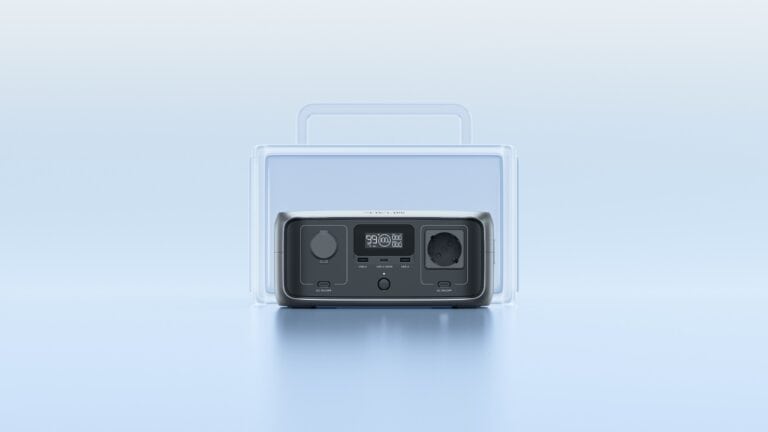Any links to online stores should be assumed to be affiliates. The company or PR agency provides all or most review samples. They have no control over my content, and I provide my honest opinion.
I recently wrote a post on ways to try and reduce your electricity bills. One of the main tools I have used in identifying power-hungry devices is the now-discontinued TP-Link Kasa HS110.
It is a superb smart plug, and have used several of them in combination with the KP105 to monitor and control some of my most power-hungry devices, mainly my PCs and servers.
Due to the ridiculous increase in electricity prices, I have been on a mission to reduce phantom energy use recently and wanted to expand my range of smart plugs to target common problem devices.
As good as the Kasa plugs are, they are quite expensive when you compare them to the TP-Link Tapo range. For things like TVs and set-top boxes, I’d likely struggle to recoup the investment in smart plugs with Kasa.
However, currently, the Tapo P110 is £10 on Amazon, down from an already reasonable £15, and the 4-pack Tapo P100 is just £28, just £7 per plug.
I don’t really like using more apps than necessary, but at those prices, I am not going to complain much. Furthermore, TP-Link has confirmed that they are working on a way to integrate the two systems, and they should be compatible later this year.
UPDATE: I have reviewed the new TP-Link Tapo P110M Smart Plug, which is identical to this plug, but it also supports Matter, allowing you to easily integrate it into 3rd party smart home ecosystems without the need for the Tapo app.
| Preview | Product | Rating | Price | |
|---|---|---|---|---|

| Tapo P110 Smart Plug with Energy Monitoring, Schedule &... |
£9.99 | Buy on Amazon | |

| Kasa Mini Smart Plug by TP-Link, WiFi Outlet with Energy... | Buy on Amazon |
Specification / Features
- Remote Control – Instantly turn connected devices on/off wherever you are through the Tapo app
- Schedule – Preset a schedule to automatically manage devices
- Timer – Create countdown timer lists for connected electronics
- Voice Control – Manage your smart plug with voice commands via Amazon Alexa or the Google Assistant
- Away Mode – Automatically turns devices on and off at different times to give the appearance that someone is home
- Compact Design – Mini-sized to avoid blocking adjacent sockets
- Easy Setup and Use – No hub required, set up quickly and manage easily through the free app
- Monitor Energy: Monitor real-time power consumption and energy. Data for current draw, todays use and the past 30 days. Graphs for 30 days and 12 months.
TP Link Tapo P110 vs Kasa HS110 Design

The Kasa HS110 appears to be discontinued and is replaced with the KP115, which has a superior design similar to the Tapo P110.
The Tapo P110 and Kasa KP115 have been reduced to a more convenient size that doesn’t get in the way of any other plugs. The height of the plug is about the same as a UK plug socket.
Dimensions of the plugs are:
- Tapo P110: 72.0 x 51 x 40 mm
- Kasa KP115: 72.5 x 51.5 x 37.5 mm
- Kasa H110: 144 x 90 x 88 mm

TP-Link Tapo P110 vs Kasa HS110 App & Data




One of my biggest annoyances with TP-Link is that they have created two product ranges that are very similar and then separated them off using two separate apps. I am pretty sure the hardware of the P110 is the same as the KP115.
TP-Link has said this will change in the future, and there should be interoperability with Tapo and Kasa products.
For now, I am stuck with two apps.
I am used to the Kasa app and find it well designed and easy to use. It is easy to set up schedules and also for manual control of the plug.
I also liked the way it displays energy data. You have current power and the days total consumption, then daily average over 6 days and 7-day total consumption and the same again but for 30 days. I used this information to see how much electricity I would save by having my servers auto shut down and startup each day. My daily average was 4.37kWh now, it is 2.64kWh. In the past, I wasn’t too concerned about that 1.73kWh, but now that works out as 32p per day or almost £10 per month.




With the Tapo app, the UI is less refined, and I would say it gives the impression of other cheap Chinese smart home apps. There is nothing wrong with it, it is just a bit ugly.
At first, it appears to offer less data with just the current draw, days usage and past 30 days. However, clicking on those numbers loads up a consumption graph for 30 days and 12 months, and from here, you can check historical daily consumption. This is technically better as I should easily be able to see my energy reduce over days/months without having to take screenshots.
Beyond the energy monitoring, you have the same scheduling, timer and away functionality.
No IFTTT
There is one big difference between Tapo and Kasa, which I didn’t realise until I started writing this review.
TP-Link Tapo lacks IFTTT integration. This can seriously limit the home automation functionality you may want to set up. Hopefully, this will change when TP-Link make Tapo and Kasa play nice together.
You can still use Alexa to replicate some of the functionality lost from IFTTT.
Price and Alternative Options
The TP-Link Tapo P110 has an RRP of £14.99 and is currently available for just £9.99. The P100 without energy monitoring is currently £10.35 or £15.50 for a two-pack or £27.99 for a four-pack.
The TP-Link KP115 with energy monitoring is £27.46. There is also the TP-Link Kasa HS300 power strip with 6 plug sockets and 3 USB ports which costs £103.34.
There are a lot of no-name smart plugs and power strips, many are attractively priced, but I am unaware of any others that have energy monitoring.
Overall
Ten quid for a smart plug that monitors your electricity use is an absolute bargain. It’s even a bargain at the full price of £15.
Both the TP-Link Tapo P110 and P100 are superb plugs that I’d strongly recommend to anyone wanting to gain greater control over their electronics and hopefully reduce electricity consumption.
While I have no intention to use IFTTT for my plugs, the lack of this functionality is going to be very annoying for some users. If you want IFTTT, you are forced to pay more than double for the Kasa plug.
If you don’t need IFTTT, then I see little reason to buy the Kasa KP115.
TP-Link Tapo P110 Smart Plug with Energy Monitoring Review Rating
Summary
The TP-Link Tapo P110 is a great buy at its full price of £15. Gaining insight into energy usage over time is incredibly useful considering the current energy crisis. The lack of IFTTT is disappointing, but its functionality I can live without vs paying more than double for the Kasa KP115.
Overall
90%-
Features - 85%85%
-
Price - 95%95%
Pros
- Less than half the price of the Kasa KP115
- Historical data via graphs
Cons
- No IFTT
- App UI is a bit clunky
I am James, a UK-based tech enthusiast and the Editor and Owner of Mighty Gadget, which I’ve proudly run since 2007. Passionate about all things technology, my expertise spans from computers and networking to mobile, wearables, and smart home devices.
As a fitness fanatic who loves running and cycling, I also have a keen interest in fitness-related technology, and I take every opportunity to cover this niche on my blog. My diverse interests allow me to bring a unique perspective to tech blogging, merging lifestyle, fitness, and the latest tech trends.
In my academic pursuits, I earned a BSc in Information Systems Design from UCLAN, before advancing my learning with a Master’s Degree in Computing. This advanced study also included Cisco CCNA accreditation, further demonstrating my commitment to understanding and staying ahead of the technology curve.
I’m proud to share that Vuelio has consistently ranked Mighty Gadget as one of the top technology blogs in the UK. With my dedication to technology and drive to share my insights, I aim to continue providing my readers with engaging and informative content.
Last update on 2025-07-18 / Affiliate links / Images from Amazon Product Advertising API









No stock till mid November. Nowhere to buy it!
Hi @James Smythe, If i am able to get KP115 for say £13 , and P110 for £9.99 Which one should i choose ????
I prefer the Kasa app, but there is not much difference functionally. If you have TP-Link or Tapo devices already, I’d stick with the same brand. If you have no other TPLink or Tapo devices then I’d probably just go with the cheapest.
James, so helpful, thank you. And today they are 2 for £15.99 on Amazon, with same day delivery!